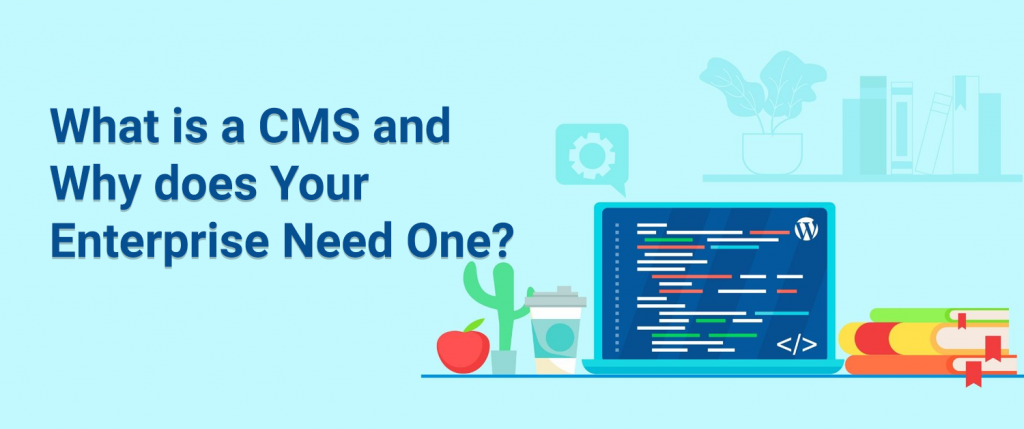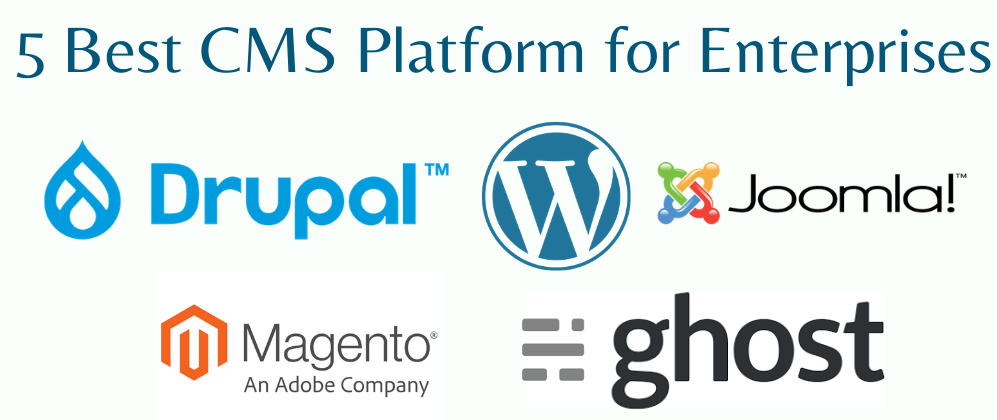
Hey is your business web application is not dynamic? Then it’s time to enhance your website with CMS (Content Management System). In a world of online marketing, the content has become the king of the present business world, and if your business services are not updated with the one, then you may lose the game.
In this blog, we’ll discuss the following:
- What is CMS?
- What are the types of CMS and its features?
- How CMS works?
- And most importantly, Need of CMS?
- And in last some popular platforms of CMS?
So, without wasting any time Let’s get started.
What is CMS?
CMS means Content Management System. As the name suggests, it is a software application that helps you to create, manage, and update your website’s content. You can easily make changes in your website with CMS; it doesn’t matter whether you know coding languages or not. Not just these, even you can change your website’s design and functionality by using inbuilt templates of CMS software. It is also known as WCM (Website Content Management).
There are two main components in Content management system:
- CMA – stands for Content Management Application that helps content creators and marketers to work with content directly without the involvement of the IT department of the company.
- CDA – stands for Content Delivery Application. CDA works at the back-end of the website. It links the content entered into templates by creators with the site so that any visitors across the world can access your website content quickly.
Types of Content Management System
As time and technology change, the CMS has emerged. There are three types of Content management systems.
- Traditional CMS – also called as Coupled CMS. Traditional CMS is basic in fields of functionality and design. Using this software, users can develop and update their content using HTML editors. Once it’s done CMS shows content according to CSS used for designing. Traditional CMS is well known for its simplicity.
- Decoupled Content management system – this software is a bit complex as compared to traditional CMS. Decoupled CMS separates all front-end and back-end operations which means creators don’t have to worry about things. It is more secure and versatile and provides lots of features to users and creators.
- Headless Content management system – the operations of Headless CMS are way similar to decoupled CMS. Here information is gulped with API instead of front-end. Headless CMS is more flexible than all other CMS Software’s.

More Insights: Drupal v/s WordPress: Which One is Better?
Features of Content Management Software
- Support – A CMS which supports various languages and various channel delivery not just makes the creator’s job easier. Still, it also helps creators to run a campaign on channels that are market suitable.
- Easy to use – CMS allows creators and brand managers to re-use elements like images, videos, designs, and others. It also allows users to use the software in their preferred language.
- Testing – CMS helps to test the input and provide a result quickly and based on feedback, creators, and brand managers can take necessary steps.
- Customization – CMS allows users to personalize elements like content, grids, and design according to their taste.
Other features
- Scalability.
- Analytics.
- Flexibility,
How CMS Works?
CMS takes care of all database queries, code, and infra in its back-end operation so that creators only focus on front-end. For instance: if you want to add image, videos, need to bold a text, need to perform some operations, then you have to write code for this. But with the help of CMS, you don’t need to write code to operate, as mentioned above. You can simply do it by going to the admin panel of CMS.
Once you are done with all your work then CDA will take inputted content and transferred it to CMA, then they assemble the code and show it to visitors.
Why do We Need CMS?
Content Management System helps to increase productivity and online visibility. We’ve listed some points regarding the need for CMS. So, read it.
- Modify your content dynamically – With CMS and online content management software, users and creators can update their content and create new content for their websites without having a bit of knowledge of coding/programming. You can do drag-and-drop-like formulae with your images and easily add some formatting to previous content. Online content management software is best for those who are not updated with technologies.
- Improves SEO – one of the best advantages of using CMS is that it optimizes the creator’s work with the latest Search Engine optimization rules. Through CMS, you can provide quality content, and ultimately it helps you to get better ranking on google.
- Multiple accounts – if you are an organization or big a group and want to perform operations on the same content by every individual, then CMS is for you. In CMS, you create multiple accounts which help to reduce messiness. You can also set specific permissions for every individual.
- Free – one of the most significant advantages of CMS is that it is open-source software that any user or creator can make their custom plug-ins, extensions, and themes. And in bonus, you can also create your very own frameworks.
Read More: Discover how custom cms solutions can revolutionize content management and enhance your digital presence effortlessly.
Conclusion
As mentioned above, it’s clear that CMS offers several benefits. It not only helps in increasing the efficiency of your web application but also helps to enhance user engagement. With CMS, you can choose any theme, design for your app according to your requirements.



